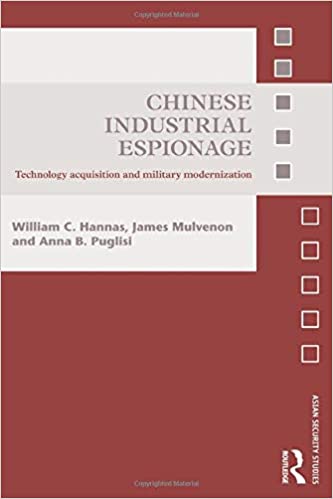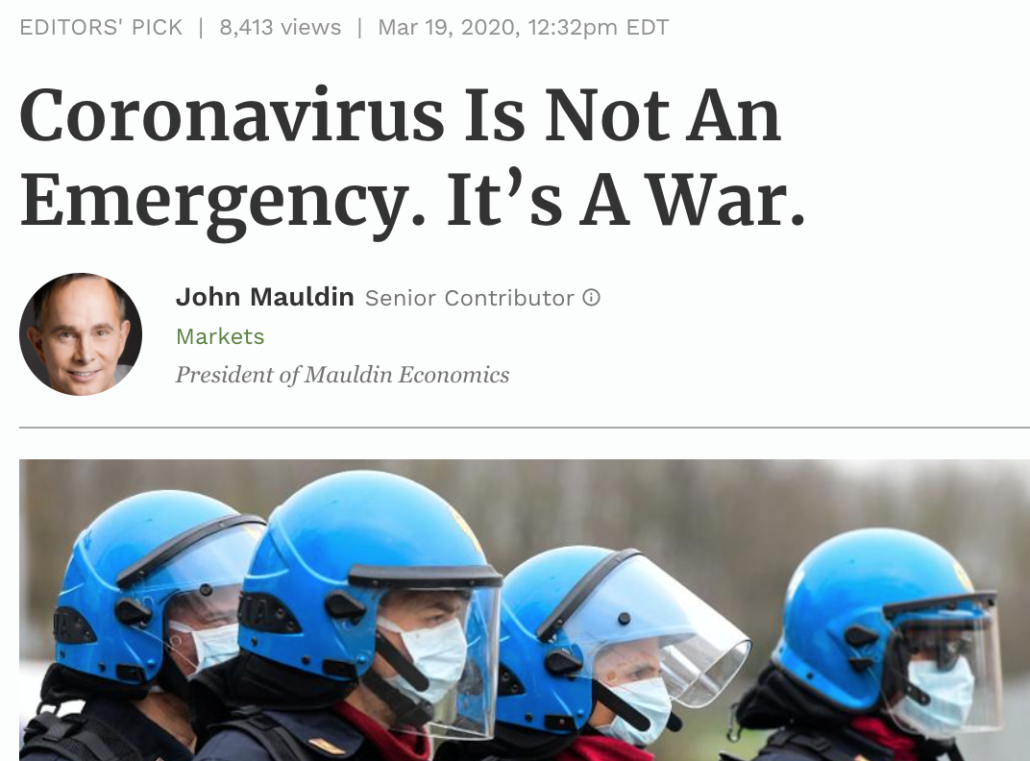Oregon Governor Advised by Bill Gates and Patent Lawyers
Who is advising our Governor?
Who are these “experts” who issued the latest projections of disease trajectory in Oregon? They are from Washington State, The Institute or Disease Modeling in Bellevue, WA. Computer models! Of course they claim the “aggressive interventions” prevented the spread and “flattened the curve”, or else we’d have almost 4 times as many cases, and “health care systems would be overburdened.” Here is where the Governor got her cartoonish graph projecting a spike in hospitalizations if we shift to “moderate interventions” instead of maintaining the “aggressive interventions” we endure now, and here is where she is getting her main advice: The Institute for Disease Modeling.
“Conclusion to Date” (4/10)
The exact document which informs the Governor’s Executive Orders locking down Oregon is titled COVID-19 intervention effectiveness and epidemic trends for Oregon: a model-based analysis. We can see their logo at the bottom of every page. They say: “At this stage, any relaxation of the current aggressive control measures is likely to result in epidemic resurgence.” IDM confirms the wisdom of the “aggressive interventions”, and their recommendations include “the urgent need for enormously increased testing capacity, detailed contact tracing… and likely the quarantining of infected individuals away from households…” But IDM “acknowledge(s) how strong the impacts of these measures will be across society, especially for low-income families and other vulnerable populations, and we hope Oregon will also act to mitigate the largest societal costs.”
Thanks a lot. What thin sympathy, but this is where the Governor is getting her advice. The Institute of Disease Modeling (Mongering) in Bellevue, WA.
The Authors
The following names are listed as the authors of this document, from a Washington modeling center making “aggressive” pronouncements and recommendations for Oregon: Cliff Kerr, Brittany Hagedorn, Dina Mistry, Daniel Klein. Three of these four (excepting Mistry) are also listed as the authors of a document informing and advising in Washington state. Another co-author of that document, Hao Hu, is listed as representing the Bill & Melinda Gates Foundation, and according to Linkedin is “ Interim Senior Program Officer at Bill & Melinda Gates Foundation Greater Seattle Area Philanthropy.” I will devote some brief study to each of these authors of the document advising Governor Brown in Oregon.
Cliff Kerr
Dr. Kerr has worked extensively on human neurological and brain systems interface with machines, including one project with DARPA, the Defense Advance Research Project Agency. In 2017–18, Kerr used a grant from the Gates Foundation of over $155,000 .”..to identify optimal spending portfolios for investments made by the Bill and Melinda Gates Foundation, with particular focus on emerging medical technologies.” This needs no translation. One of the authors of the primary document advising Oregon’s Governor used Gates Foundation money to help Gates figure out how to invest his money more effectively in new medical technologies. Think global COVID-19 vaccines, and much more, as we will see. This alone is a flagrant conflict of interest.
Brittany Hagedorn
This co-author is Senior Financial Analyst at IDM. She has co-authored six research publications, one in 2020 and the rest in 2019, four published in the journal Vaccine, all focused on vaccine cost-effectiveness, and all from her position at IDM. One of her papers explores the cost effectiveness of identifying which Third-World children have already had a few measles vaccines, and whether it would cost less to inject them again without finding out. In other words, the study tried to determine if it was a cost savings to inject children with another measles vaccine without finding out if they already had their required injections. Two of her papers rely on data drawn from the Global Polio Eradication Initiative, which receives its funding directly from the Gates Foundation as well as many other sources Gates funds, such as World Health Organization (Gates is now the #1 donor), UNICEF, US CDCP, GAVI (Gates is a major donor and has one of only four Board seats), and Rotary International.
Dina Mistry
Dr. Mistry is a Postdoctoral Research Scientist at IDM. Her work there “focus(es) on modeling human response to disease awareness and the impact this has on disease spreading”, .”..using digital signals of health information and communication (such as Google, Twitter, Reddit) to model disease awareness and response…” In other words, surveilling our internet activity to track our exposure and spreading of disease. Other papers she has co-authored, one as recent as late February, acknowledge “ The growing need for realism in addressing complex public health questions is however calling for accurate models of the human contact patterns that govern the disease transmission processes.” It is reassuring to know that “realism” is now a research parameter. I hope they got it right for Oregon. These papers were published through Cornell University. Gates is a big donor.
Daniel Klein
Klein is listed as a Senior Research Manager at IDM. He helps develop the computer models and algorithms IDM uses to predict disease progression, like those which produced the graphs our Oregon Governor is using to justify the continued “aggressive measures.” Even though Klein joined IDM in 2010, “During 2018, he led various data science and strategy initiatives as a Senior Program Officer in the Global Development Strategy, Data, and Analytics team at the Bill & Melinda Gates Foundation.” Klein’s co-authors of his most recent papers are both from the University of Washington, Seattle. Gates is a huge funder of this institution, with over $1.6 million just this year, and enormous funding going back over a decade. An earlier paper by Klein saw Hao Hu as a co-author, who, as already shown, is a direct recipient of Gates funding.
Keep in mind that the Gates sponsored vaccine programs have inflicted immense damage and death, especially in the developing world, including hundreds of thousands of children paralyzed, millions of women sterilized, and many thousands dead. “Experts” at IDM are sure to know this.
Studies From China
Six of the nine references listed on the final page of the document (pg 10) used by these IDM personnel for their modeling come from Communist China. These are highly suspect sources and cannot be trusted. We have not been told the truth by our own media much less propaganda out of Communist China. This document based so much on studies out of China and which Governor Brown is using to guide her Executive Orders for Oregon is less disease modeling than disease mongering.
Who Funds Institute for Disease Modeling?
The Institute for Disease Modeling (Mongering) gets lots of its money from—you guessed it—the Bill and Melinda Gates Foundation. IDM is an organization within the Global Good Fund, which is entirely funded by Gates.
Global Good invents technology to solve some of humanity’s most daunting problems. We do this by collaborating with leading humanitarian organizations, forward-looking governments, research institutions, and corporate and private sector partners that bring our inventions to market.
Gates keeps a focus on markets and profits when helping the world’s poor and sick. Gates appears to be a global demagogue trying to vaccinate and chip everyone in the world for power and profit. Global Good features a picture of Gates fiddling with some tech object in a lab while a geek and a woman look on—right after the big banner picture close-up of a mosquito with its proboscis buried face-deep in human flesh and its torso engorged with red blood. Lovely. Which one is the worse pest scourge of humanity?
Funding From Patent Lawyers
The other Corporation that ‘collaborates’ with Gates on Institute for Disease Modeling (Mongering) is Intellectual Ventures. To whit:
Intellectual Ventures is an American private company that centers on the development and licensing of intellectual property. Intellectual Ventures is one of the top-five owners of U.S. patents, as of 2011. Its business model has a focus on buying patents and aggregating them into a large patent portfolio and licensing these patents to third parties.
Global Good is so intertwined with Intellectual Ventures that the GG logo says underneath “Ideas by Intellectual Ventures.”
Intellectual Ventures (Vultures) is active in spinning off new companies as it acquires patents, and their pace is accelerating. One of these spinoffs in 2018 is Carillon Technologies, a military contractor “to aid national security and government contractors.” Carillon’s investors include Bill Gates, co-founder of Microsoft. Another of many spinoffs is Terra Power, which “provides, safe, affordable and carbon-free energy” (nuclear). Chariman of the Board? Bill Gates. Echodyne is another IV spinoff with military applications for which Gates is an investor. Gates Investments is an investor in spinoff Pivotal Commware, and Lumotive, and AI developer Lexset through Microsoft, and 3D “immersive media” company YouVue… These are just a sampling of some of the ventures IV spins off, and Gates is invested in most of them if not on the Board.
Main founder and CEO of Intellectual Ventures is Nathan Myhrvold, who formerly worked at—wait– Microsoft! Turns out he’s the geek in the picture with Gates and the woman in the lab on the Global Good site.
Edward Jung, Co-founder of IV, also worked formerly at Microsoft, playing major roles as “chief architect and advisor to executive staff” and much else. Before joining Microsoft “he founded the Deep Thought Group, working on neural network chips for learning and parallel computation.” Direct computer mind control? These behind IDM advising Governor Brown are technocrats moving for all forms of technocratic world control. Eddie also worked on AI at Microsoft. was an “advisor” to Harvard Medical School, and “consultant” to Asia Pacific Federation, the China Academy of Sciences, the National Academy of Sciences, and WHO.
IV Executive Vice President, Invention Science Fund Chris Alliegro formerly worked at Microsoft. Executive Vice President, Global Good and Research Maurizio Vecchione leads with the following statement: “In this role, Maurizio oversees Global Good, IV’s collaboration with Bill Gates to invent and deploy technology specifically focused on improving life in developing countries, as well as the research and operations of the Intellectual Ventures Laboratory (IV Lab) and Institute for Disease Modeling.”
Conclusion
The co-founders of the Institute for Disease Modeling (Mongering) are the world’s most currently hated man Bill Gates—for declaring lockdowns have to continue until he develops and deploys his new untested RNA vaccine worldwide—and big-time patent lawyers, corporate CEO’s and tech spin off experts at Intellectual Ventures (Vultures). These people are in it for the money and power, not Oregon’s public health. These are the “experts” from whom Governor Brown is getting her advice in running Oregon during the “state of emergency”: Gates and a bunch of corporate patent lawyers and mad scientists who want to vaccinate and chip the world. These are the technocrats trying to profit and seize power by imposing technological “solutions” they invent and sell. They see money and power in the ongoing destruction of Oregon’s economy, society and people. They get their “studies” from Communist China to inform their tables and graphs, and from these issue their recommendations to our Governor for continued lockdown apocalypse. Their paper which informs Oregon’s Governor Kate Bronw in her remarks and presentation is now exposed for multiple conflicts of interest and domineering control by Bill Gates and his high tech lawyer cronies.
Action
Impeach Governor Brown. If she does not know of these flagrant conflicts of interest among the source of her advice, that is criminal negligence. If she knows, that is criminal malevolence and a crime against the humanity of the State of Oregon. This is not partisan, this is life and death.
And impeach Gates! Wait, he was never elected. If we want real advice, hire Dr. Wittkowski, his thirty-five years experience in epidemiology will be a much better guide for Oregon, though his practical concept of natural herd immunity will not sell the vaccines and other medical tech promoted by Gates and Intellectual Ventures through the Institute for Disease Modeling (Mongering). Wittkowski’s advice would stop the damage the ongoing lockdown is inflicting, and allow us to start to recover. IDM’s will not. I sent IDM an email asking if they are getting paid by Oregon tax money to advise our governor. The reply: “We are an independently funded entity and neither seek nor accept outside funding.” We know where you get your funding.
Something seems rotten in the state of Washington, but it is likely a corruption spread throughout the Northwest by the big money power of Bill Gates.
Let’s bring the good out in Oregon. They have Global Good, we have Oregon Good. Can we get the Governor on our side?
George Mackenzie is a writer who lives in southern Oregon.









